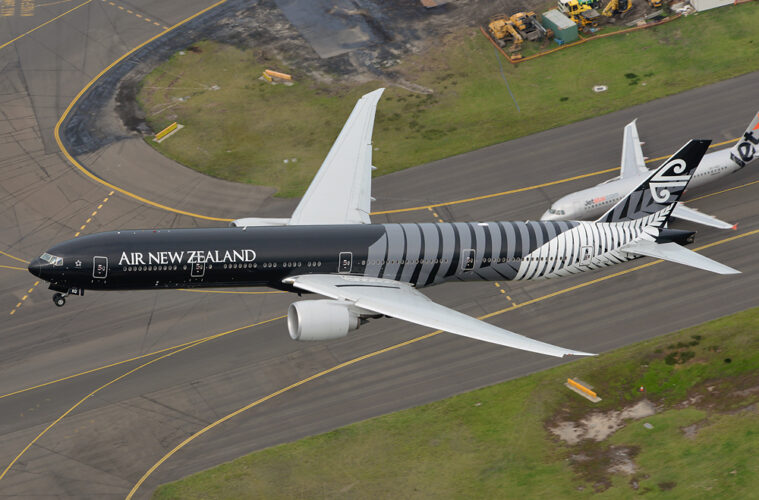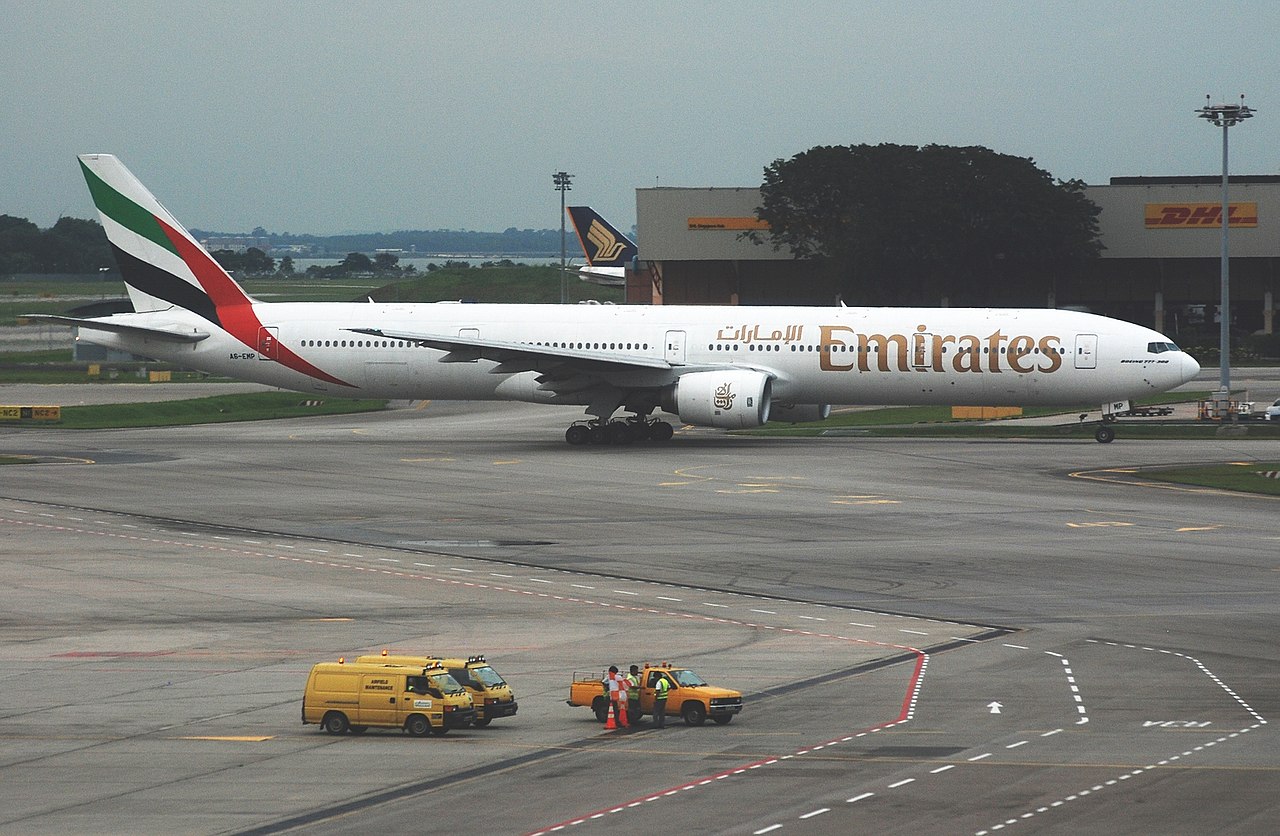B777

- The American Airlines Boeing 777-200ER featured here presents the airline's new Premium Economy product.
- We would like to show you a description here but the site won’t allow us.
- Interesting facts. Our Boeing 777: Is the world's largest twin-engine jet. Is also called 'Boeing's seventh wonder'. Has 3 million parts provided by more than 900 suppliers.
The Boeing 777X is the latest series of the long-range, wide-body, twin-engine Boeing 777 family from Boeing Commercial Airplanes.The 777X features new GE9X engines, new composite wings with folding wingtips, greater cabin width and seating capacity, and technologies from the Boeing 787.
BOEING 777-300ER
From SKYbrary Wiki
B77W
| Aircraft | |||
|---|---|---|---|
| Name | 777-300ER | ||
| Manufacturer | BOEING | ||
| Body | Wide | ||
| Wing | Fixed Wing | ||
| Position | Low wing | ||
| Tail | Regular tail, mid set | ||
| WTC | Heavy | ||
| APC | D | ||
| Type code | L2J | ||
| RFF Category | 9 | ||
| Engine | Jet | ||
| Engine count | Multi | ||
| Position | Underwing mounted | ||
| Landing gear | Tricycle retractable | ||
| Mass group | 5 | ||
| |||
BOEING 777-300ER
American Airlines 777 Seating Chart
Description
The 777-300ER ('ER' for Extended Range) is the B-market version of the 777-300. It features raked and extended wingtips, a new main landing gear, reinforced nose gear, and extra fuel tanks. The -300ER also has a strengthened fuselage, wings, empennage (tail assembly), and engine attachments. The maximum range is 7,930 nm14,686,360 m <br />14,686.36 km <br />48,183,595.836 ft <br />, made possible due to a higher MTOW along with the increased fuel capacity. The -300ER can fly approximately 34% farther than the -300 with a full load of passengers and cargo. B77W is member of the B777 family of aircraft.
Technical Data
| Wing span | 64.8 m212.598 ft <br /> |
|---|---|
| Length | 73.9 m242.454 ft <br /> |
| Height | 18.5 m60.696 ft <br /> |
| Powerplant | 2 x GE90-115B (511 kN). |
| Engine model | General Electric GE90 |

Performance Data
| Take-Off | Initial Climb (to 5000 ft) | Initial Climb (to FL150) | Initial Climb (to FL240) | MACH Climb | Cruise | Initial Descent (to FL240) | Descent (to FL100) | Descent (FL100 & below) | Approach | ||||||||||
| V2 (IAS) | 168 kts | IAS | 200 kts | IAS | 300 kts | IAS | 300 kts | MACH | 0.83 | TAS | 490 kts | MACH | 0.84 | IAS | 300 kts | IAS | 240 kts | Vapp (IAS) | 149 kts |
| Distance | 3000 m | ROC | 3000 ft/min | ROC | 2500 ft/min | ROC | 2000 ft/min | ROC | 1500 ft/min | MACH | 0.84 | ROD | 1000 ft/min | ROD | 3000 ft/min | MCS | 250 kts | Distance | 1800 m |
| MTOW | 351530351,530 kg <br />351.53 tonnes <br /> kg | Ceiling | FL430 | ROD | 1500 ft/min | APC | D | ||||||||||||
| WTC | H | Range | 78257,825 nm <br />14,491,900 m <br />14,491.9 km <br />47,545,603.709 ft <br /> NM | ||||||||||||||||

Accidents & Serious Incidents involving B77W
- A320/B773, Dubai UAE, 2012 (On March 20 2012 a Ural Airlines Airbus A320 failed to taxi as instructed after vacating the landing runway 12L at Dubai and crossed the lit stop bar of an intersection access to runway 12R before stopping just in time to prevent a collision with a Boeing 777-300ER about to pass the intersection at very high speed on take off. Taxi clearance had been correctly given and acknowledged. The aircraft commander had extensive aircraft type experience but the inexperienced First Officer appeared to be undergoing early stage line training with a Safety Pilot present. The Investigation is continuing.)
- B773, Lagos Nigeria, 2010 (On 11 Jan 2010, an Air France Boeing 777-300ER successfully rejected a night take off from Lagos from significantly above V1 when control column pressure at rotation was perceived as abnormal. The root and secondary causes of the incident were found to be the failure of the Captain to arm the A/T during flight deck preparation and his inappropriate response to this on the take off roll. It was considered that his performance may have being an indirect consequence of his decision to take a 40 minute period of in-seat rest during the 90 minute transit stop at Lagos.)
- B773, vicinity Toronto Canada, 2012 (On 28 May 2012 a GE90-powered Air Canada Boeing 777-300ER experienced sudden failure of the right engine during the initial climb after take off. There were no indications of associated engine fire and the failed engine was secured, fuel jettisoned and a return to land made. The Investigation found that the failure was related to a known manufacturing defect which was being controlled by repetitive boroscope inspections, the most recent of which was suspected not to have identified deterioration in the affected part of the engine.)
- B77W, en-route, northeast of Los Angeles USA, 2016 (On 16 December 2016, a Boeing 777-300 which had just departed from runway 07R at Los Angeles was radar vectored in Class ‘B’ airspace at up to 1600 feet below the applicable minimum radar vectoring altitude. The Investigation found that the area controller’s initial vectoring had been contrary to applicable procedures and their communication confusing and that they had failed to recover the situation before it became dangerous. As a result, as the crew were responding in night IMC to a resulting EGPWS ‘PULL UP’ Warning, the aircraft had passed within approximately 0.3 nm of obstructions at the same altitude.)
- C525 / B773, vicinity London City UK, 2009 (On 27 July 2009, a Cessna 525 departing from London City failed to comply with the initial 3000 feet QNH SID Stop altitude and at 4000 feet QNH in day VMC came into close proximity on an almost reciprocal heading with a Boeing 777-300ER. The 777, on which line training was being conducted, failed to follow any of the three TCAS RAs generated. Actual minimum separation was approximately 0.5nm laterally and estimated at between 100 feet and 200 feet vertically. It was noted that the Cessna had been given a stepped climb SID.)
The Boeing 777-200 is a long range, twin aisle, twin-engine jet manufactured by Boeing, the American aerospace company. We operate these aircraft on longhaul routes to North and South America, the Caribbean, Africa, Australasia, the Far East, Middle East and Gulf destinations.
777 Jet
Often referred to as the 'Triple Seven', it was the world’s first commercial aircraft entirely designed by computer. Its visible features include super large engines, low hanging landing gear and a blade shaped tail cone with a relatively narrow tailfin.
British Airways took part in the design of the aircraft with Boeing, and is today one of the world’s largest operators of the type. The Boeing 777 has emerged as a best seller for longhaul commercial aircraft thanks to its excellent fuel efficiency and cabin comfort.
Passenger benefits include:
- Super quiet, super wide cabins with high ceilings
- Personal audio and video systems for all seats
- Choice of First, Club World, World Traveller Plus and World Traveller. (First available on some aircraft)
B777-9
Photo gallery
Technical information
| Number in fleet | 45 |
| Passenger capacity | up to 336 (3 or 4 class) |
| Length | 63.7m (209 feet 1 inches) |
| Wingspan | 60.9m (199 feet 11 inches) |
| Height | 18.5m (60 feet 9 inches) |
| Engines | 2× Rolls Royce Trent 800 or 2× General Electric 90 |
| Maximum speed | 950km/h (590mph, Mach 0.89) |
| Range | 6,857km (4,261 miles) |
Seating plans
These are the different seating layouts for the Boeing 777-200:
- 4 class aircraft (with a First cabin)
- 3 class aircraft (without a First cabin)
- 3 class aircraft (without a First cabin and available on selected LGW routes)
Did you know?
- The diameter of General Electric engines on the Boeing 777 is as wide as the passenger cabin of the Boeing 737.
- In 2006, British Airways set a new record for the longest non-stop commercial flight. The Boeing 777-200 flew 17,157km (9,274nm) from Brussels to Melbourne, in 18h45.
B777 Cockpit
Improvements for London Gatwick fleet
Boeing 777x Delta
If you're flying from London Gatwick, you can now look forward to a fully refreshed Boeing 777 fleet and new generation economy (World Traveller) and premium economy (World Traveller Plus) seats. The refreshed cabins will soon start appearing on the Boeing 777 fleet at London Gatwick and the whole fleet will be updated by Summer 2019.
The economy and premium economy cabins have been fitted with elegant new seats with 50% larger entertainment screens and each seat will have a USB socket.